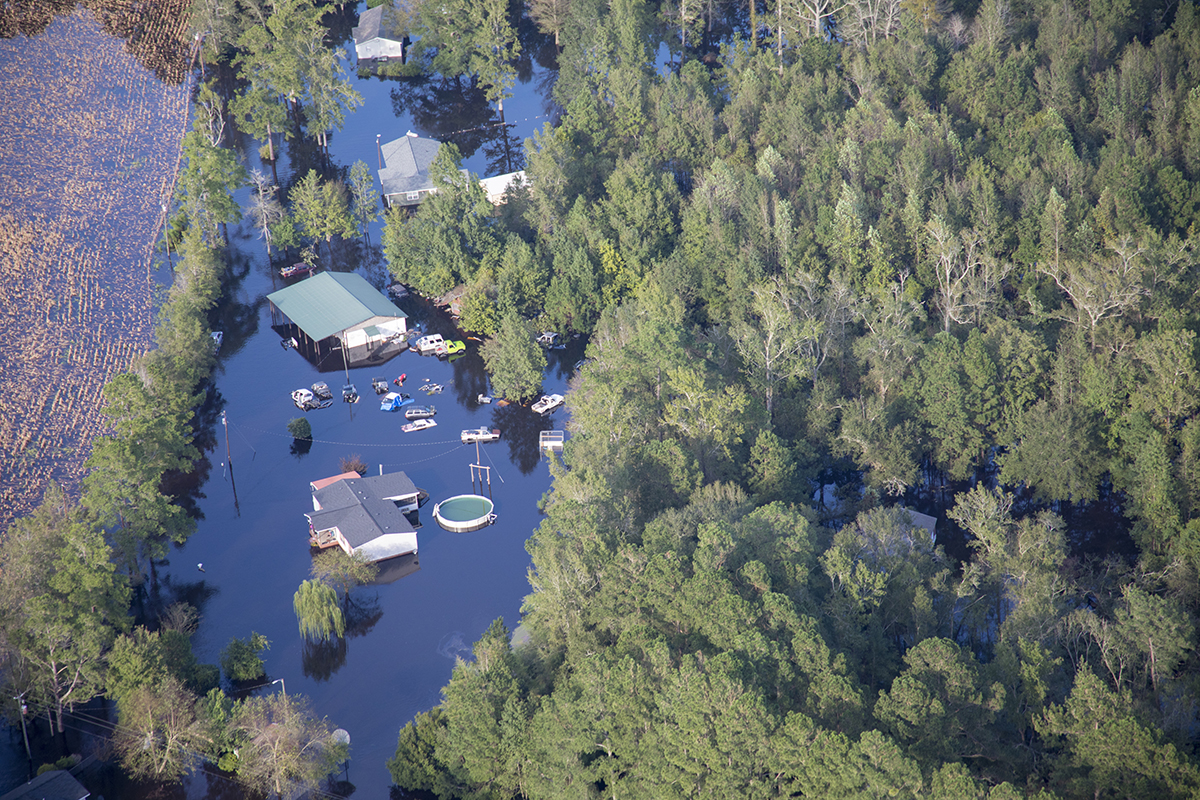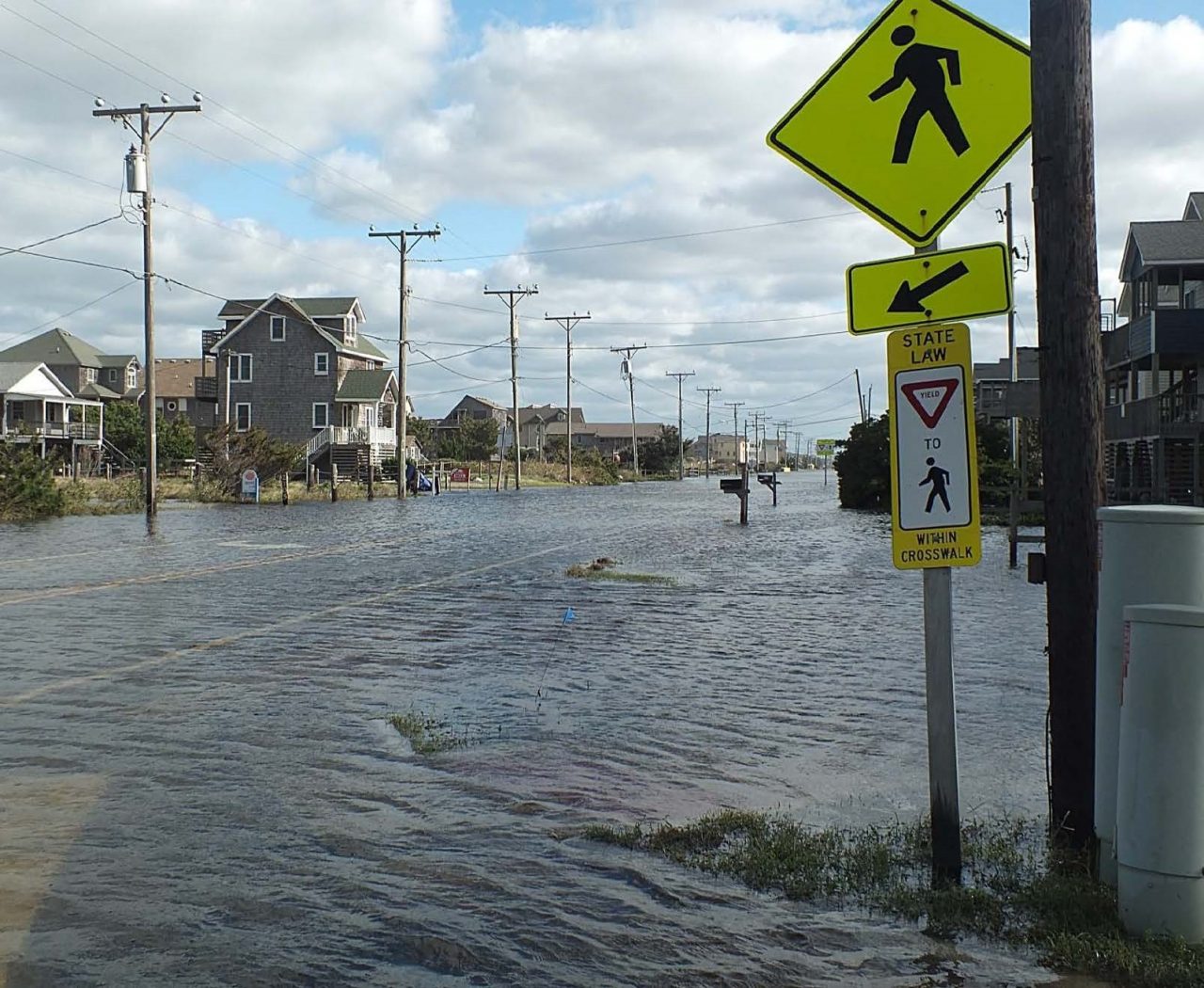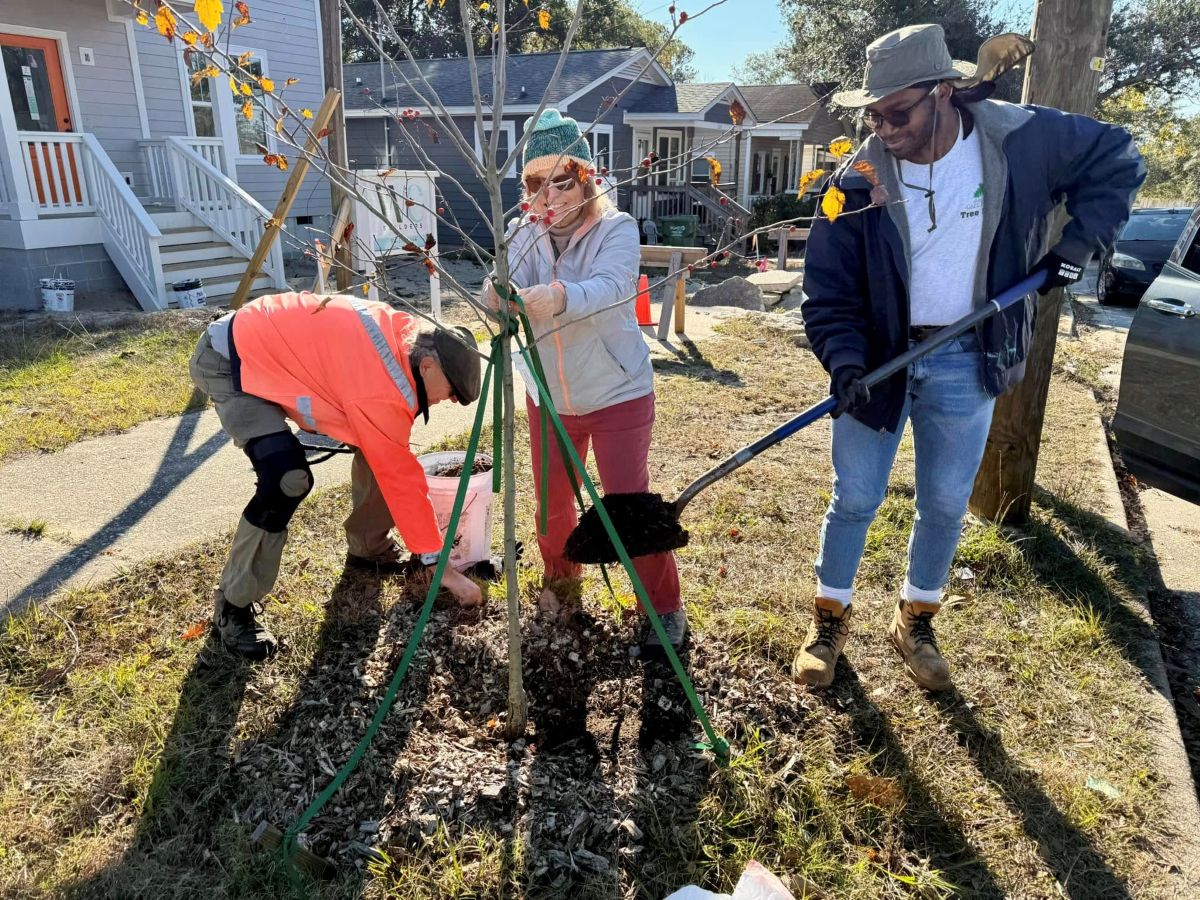
Tropical storms have cost North Carolina tens of billions of dollars over the last 40 years.
These weather-related disasters are putting a spotlight on the state’s “flood-risk crisis,” according to the North Carolina Department of Environmental Quality, as well as the potential for “the role of a changing climate, including increases in rainfall and sea level rise to worsen the crisis.”
Supporter Spotlight
Heightening the threat, in association with a growing population, is that more impervious surfaces are being built, which decreases the amount of rainwater the ground can absorb.
The North Carolina General Assembly, in an effort to better understand and prepare for flood risks across the state, allocated $20 million in 2021 to NCDEQ’s Division of Mitigation Services to develop a flood resilience program, and nearly $100 million to implement resiliency projects in six of the state’s 17 river basins.
Called the North Carolina Flood Resiliency Blueprint, the program is intended to serve as “the backbone of a State flood planning process that increases community resiliency to flooding, shall be a resource for riverine and stream management to reduce flooding, and should support the establishment and furtherance of local government stormwater maintenance programs,” per the 2021 session law.
Stuart Brown, who has been leading the blueprint team for a little more than a year, told Coastal Review in a recent interview that the blueprint’s goal is to make the state more resilient to flooding.
“We’re trying to better understand what floods, how it floods, and what the impacts of that flooding are,” he explained, which began with looking at what information was available statewide on flooding, what information was needed to better understand flooding, and to see what other states and federal agencies were doing to try to address similar issues.
Supporter Spotlight
Studies show that around 60 to 70% of flood damage happens outside of federally defined flood hazard areas, Brown continued. “If that is our understanding of floods, then we’re not going to be particularly successful at mitigating that flooding, or doing things that help reduce the damage caused by that flooding.”
To get a more accurate estimate of current and future flood risks, NCDEQ has partnered with state Emergency Management and other agencies to improve existing flood modeling tools.
Being built right now, the improved modeling will consider, for example, changes in precipitation patterns and sea level subsidence in coastal areas, and all of that new information will feed “into our understanding of what our current and future flood risk is,” Brown said.
The improvements to existing flood modeling tools that are to “provide more accurate estimates of current flood risks and project future flood risk to support long-term strategic planning,” as NCDEQ states, are just one part of the blueprint strategy.
Once the blueprint is complete, it is expected to offer decision-makers, especially in communities with limited resources, help to build site-specific flood mitigation projects and with funding opportunities.
“Traditionally, disaster management focuses on preparedness, response, and recovery. The Blueprint’s focus is on proactive resilience planning and implementation that can reduce the initial impact from future flood events and help communities recover more quickly,” according to the blueprint spring 2025 update.
Blueprint background
Brown explained during a presentation earlier this year that the state has suffered for decades from billion-dollar disasters and the blueprint “represents an opportunity to take a step back from the disaster cycle and invest in the proactive planning and implementation of resilience work to mitigate future risk and reduce the cost and disruption from future flooding.”
He was speaking at the two-day North Carolina Water Resources Research Institute’s annual conference this March in Raleigh. WRRI is a multi-campus program of the University of North Carolina System and provides resources and support to junior faculty and students.
After hurricanes Matthew in 2016 and Florence in 2018, both totaling around $27 billion in damage, the General Assembly, knowing that these types of storms are becoming more frequent, more severe and more costly, recognized that they should look more into investing in resilience, Brown continued.

When the General Assembly tasked NCDEQ in 2021 with developing the statewide flood resiliency blueprint for major watersheds impacted by flooding, it was with the goal “to better equip the state and its communities to manage current and future flood risk.”
The blueprint is imagined as a statewide program, but right now, the project is funded and authorized to work only in the Neuse, Cape Fear, Lumber, Tar-Pamlico, White Oak, and the French Broad, which was added in 2024 prior to Hurricane Helene, Brown said.
Ultimately, the blueprint is to provide a way to explore different options to reduce risk, exposure to and disruption from flooding, building resilience and give local governments “the tools and data and processing they need to support their flood resilience planning,” he added.
Phased approach
Brown said in an interview that the project has several components and is being developed in three phases.
The first phase was completed in March 2024 with the release of the 98-page draft blueprint document and 77-page draft Neuse Basin Flood Resiliency Action Strategy a few months later.
The draft blueprint was the “first major deliverable and is the outline for how we do this work,” Brown said. “This is the framework for how to do these river basin action strategies. We put that framework in motion.”
A river basin action strategy is tailored to a specific river basin and uses the blueprint tool and public input to outline specific actions for increasing flood resilience.

The draft pilot Neuse action strategy serves as a template for this type of planning going forward, but is currently missing information about vulnerability that the flood modeling improvements are expected to illustrate, Brown said.
Both documents were written using contributions from more than 150 researchers, technicians, government leaders and staff, researchers, and other partners.
Phases two and three are being developed concurrently. Phase two includes building the interactive online tool with community-specific data and project management guidance tailored to the user’s needs. The tool also is a repository for information, modeling outputs and technical reports. Though the online decision-support Blueprint Tool is public now, Brown said the team is “still building functionality.” Once the improved modeling is complete, that new information will be incorporated into the online tool.
In addition to revisiting the Neuse pilot strategy during phase three, “we’ve also kicked off river basin action strategies for the Cape Fear, Lumber, White Oak and Tar-Pamlico,” he added.
The basin strategy advisory boards are to use the draft blueprint and online tool to develop the other five river basin action strategies.
Staff have been meeting with these advisory boards, and there are plans to meet with different municipalities and counties, all leading to river basin action strategies in Early 2026, Brown said.
Funding, partnerships
The blueprint has an implementation component, Brown explained.
Staff began funding projects last year out of that $96 million allocated in 2021 for priority projects in the six river basins. The money was released after the draft blueprint document was published in March 2024.
NCDEQ partnered with state agencies and local governments to enable dozens of projects worth more than $65 million. The blueprint program invested $25.6 million into these projects according to the April 30 quarterly report to the General Assembly.
“We funded 61 projects so far statewide, that includes many coastal projects among them,” Brown said.
Beaufort, Brunswick, Carteret, Hyde, New Hanover, Onslow, Pamlico and Pender have all been selected to receive or have received close to $4 million total for stream debris or sediment removal, infrastructure, flood risk reduction, restoration or acquisition.
The state announced funding through the blueprint twice in November 2024 and again in April. Right now, proposals are being accepted for projects that address flood reduction or flood resiliency in key river basins in the state. The deadline is June 30.
“By investing in a more flood-resilient state now, North Carolina will protect and improve the lives and livelihoods of North Carolinians, secure and build upon its thriving economy, expand tourism, support agriculture, forestry, and other working land businesses, fortify transportation infrastructure, protect critical aspects of the military mission, and steward natural resources,” the draft blueprint document states.
Secretary Wilson highlights blueprint
NCDEQ Secretary Reid Wilson has spoken about the blueprint in front of larger audiences since stepping into the leadership role the first of this year, including at the WRRI conference in March and at the North Carolina Coastal Federation’s 2025 Coastal Summit in April in Raleigh.
“We have to engage the public. We have to plan for the future, and again, plan for more severe storms, which is why it’s a wonderful thing that our Division of Mitigation Services is developing the North Carolina Flood Resiliency Blueprint,” Wilson said at the WRRI conference.
He added that the blueprint is the backbone of a planning process to increase community resilience to flooding through all of our river basins and “is the largest statewide flood mitigation investment in state history.”
Wilson explained in April that the blueprint is one step the agency has taken toward resiliency and that the online decision support tool “will enable state and local government agencies to better understand how to build and rebuild to mitigate hazards.”
He continued that while the blueprint team is working with volunteers to develop the six river basins, including those on the coast, “the hope is to expand into all other basins as well. The action strategies are intended to bring together stakeholders to figure out steps to take to make their communities less vulnerable,” Wilson said.
Around the time of a funding announcement, Wilson said “so we’re trying to get the money out the door but in a really smart way, so we know there’s more to do on resilience.”







